Written by Bryan Dearsley

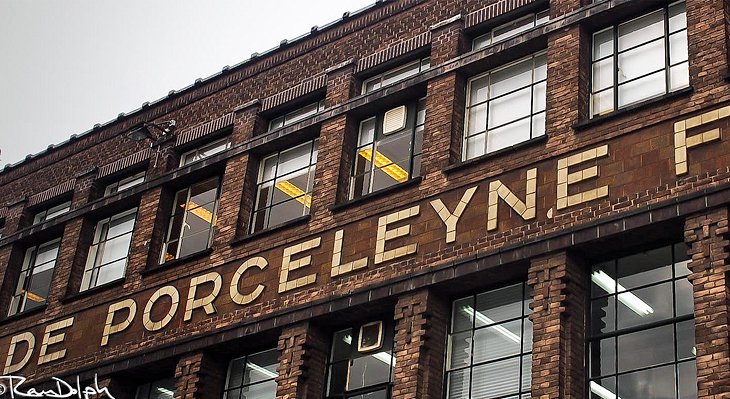
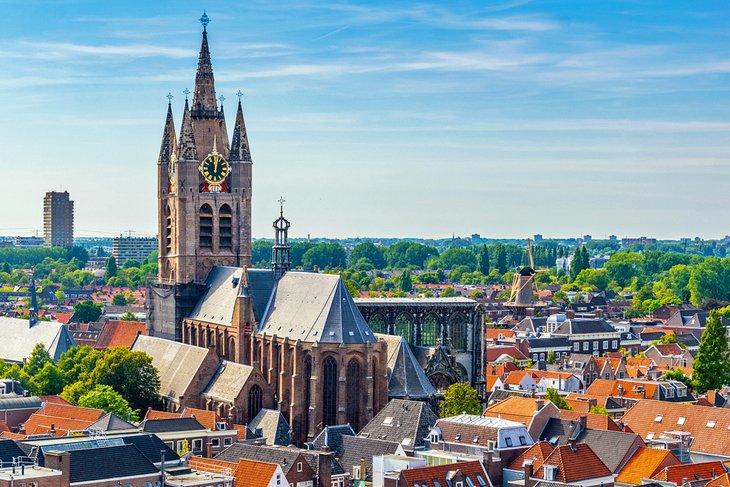
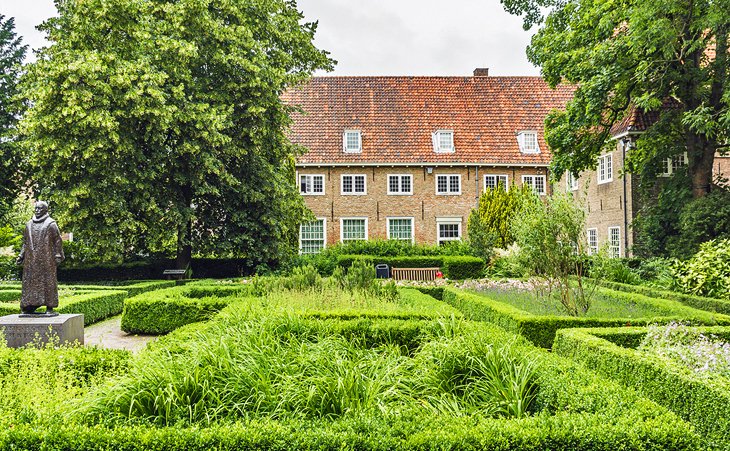
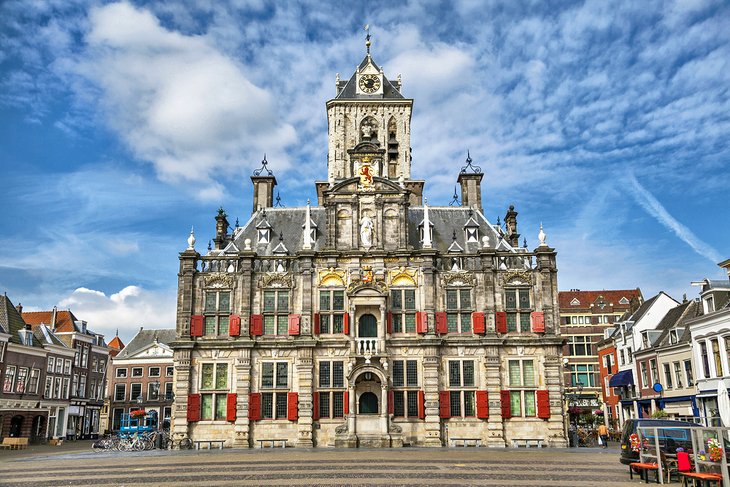
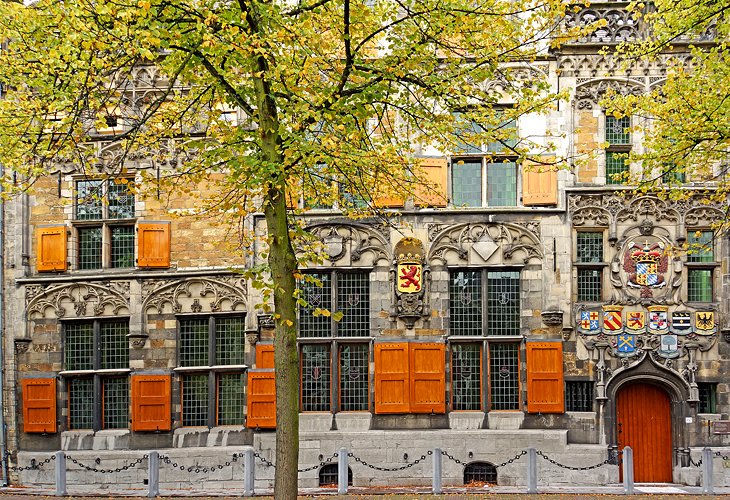
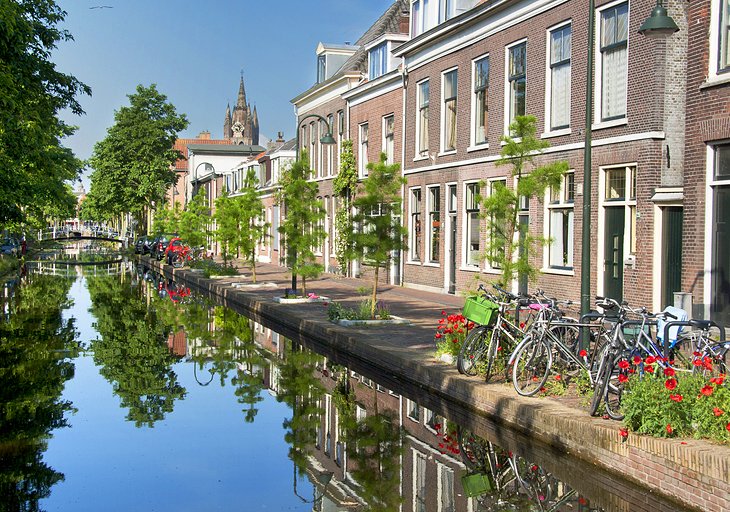
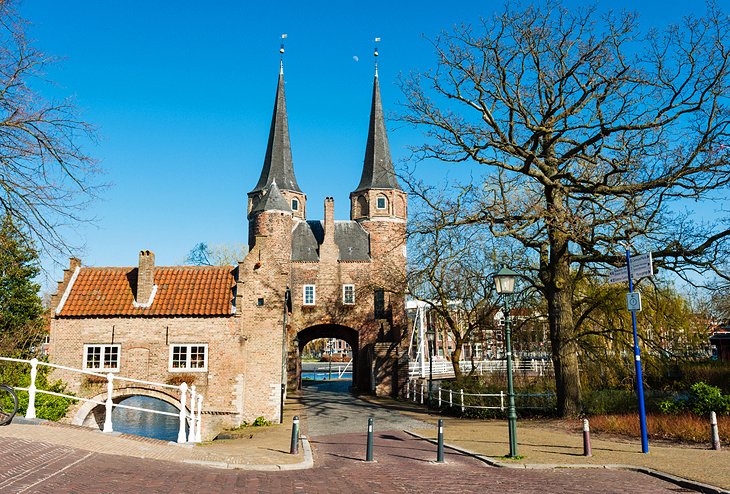
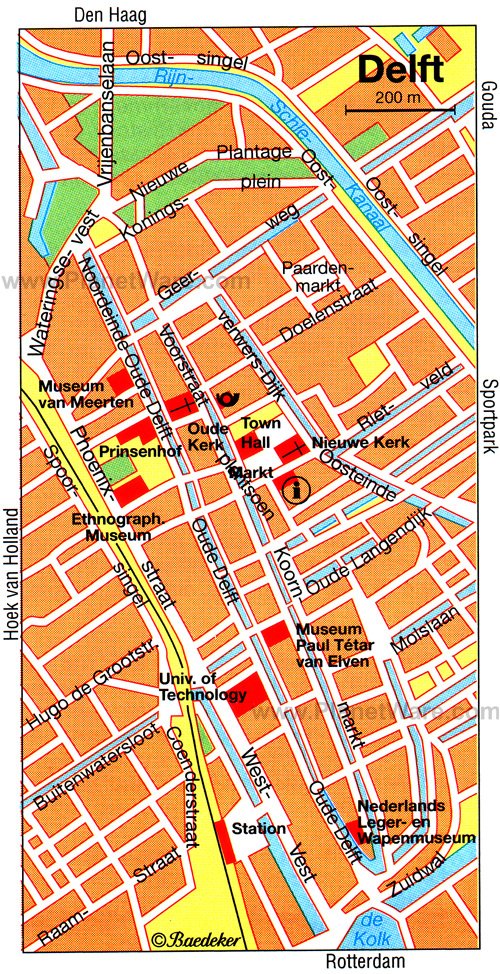 Delft Map - Attractions
Delft Map - Attractions
Delft lies on the River Schie between Rotterdam and The Hague,
its picturesque Old Town ringed by canals and home to many churches and
old houses. In addition to being a university city, it has long been
associated with trades and industry, in particular the manufacturing of
Delftware, a world-famous form of pottery that has been around since the
17th century and is now experiencing a comeback (much of the town's
most significant architecture dates from the 1700s when the pottery's
popularity was at its peak). Delft is also well known as the birthplace
of 16th-century scholar and statesman Hugo Grotius; painter Jan Vermeer,
whose famous View of Delft is in the Mauritshuis in The Hague;
and 17th-century scientist Antoni van Leeuwenhoek. Today, the city is a
vibrant cultural and tourist hub, home to many fine museums and
numerous entertainment opportunities.
1 New Church

New Church
Share:
In Delft's spacious Market Square (Markt), the majestic New Church
(Nieuwe Kerk) is, in fact, anything but new. Built between 1396 and
1496, this splendid church's Gothic tower rises 108 meters above the
large square, offering great views and pleasant chimes from its
17th-century carillon. Of note is a monument to King William I, who died
in Berlin
in 1843, as well as a memorial relief of Prince Frederick William of
Orange, who died in 1799. A marble monument of Hugo Grotius, along with
his burial place, can also be visited. The church's most important
feature, however, is the magnificent tomb of William I of Orange
(William the Silent), one of the great masterpieces of Dutch Baroque
sculpture made by Hendrick de Keyser between 1614-21. Richly decorated
under a white canopy borne on black marble columns is a white figure of
William surrounded by bronze allegorical figures including Justice (with
scales), Freedom (with scepter and hat), Valor (clad in a lion's skin),
and Faith (with a book and a model of a church). In a vault below the
tomb 41 princes and princesses of the house of Orange are buried
(including Queen Wilhelmina, who died in 1948).
Address: Markt 80, 2611 GW Delft
Official site: www.oudeennieuwekerkdelft.nl
2 Editor's Pick Koninklijke Porceleyne Fles

Koninklijke Porceleyne Fles
Randolph Croft
Share:
De Porceleyne Fles - manufacturer of Royal Dutch Delftware - was
established in 1653 and is the last remaining maker of this world-famous
pottery (all told, there were 32 such manufacturers in the area in the
17th century). This superb attraction provides a fascinating look at the
history and production process of Blue Delftware, which is hand painted
to strict, centuries-old standards. A highlight of a visit is watching
the painters in action, followed by a visit to the factory, along with a
chance to view their historical collections. A number of fun packages
are available that combine a visit with a cruise along the nearby
canals, painting workshops, afternoon teas, and tours (English language
guides are available).
Address: Rotterdamseweg 196, 2628 AR Delft
Official site: www.royaldelft.com/news.asp?myid=66&gid=2&menu=3
3 The Old Church

The Old Church
Share:
Delft's Old Church (Oude Kerk) was built around 1250 and is notable
for its slightly leaning tower, along with its fine timber vaulting from
1574. The tower was rebuilt in 1450 in a style characteristic of the
Coastal Gothic movement so popular in northern Europe, and is notable
for its distinctive four corner turrets around the pyramidal roof. The
church contains a number of important works of art, including a carved
pulpit from 1548; the marble tomb of Admiral Piet Hein, famous for
having captured the Spanish silver fleet in 1628; and the tomb of
Admiral Maarten Tromp, who commanded the Dutch navy in 32 naval battles
during the 17th-century. Famed Dutch painter Jan Vermeer is also buried
in the church.
Address: Heilige Geestkerkhof 25, 2611 HP Delft
4 The Prince's Court and Prinsenhof Museum

The Prince's Court and Prinsenhof Museum
Share:
One of the most attractive corners of Delft, Prinsenhof consists of a
picturesque group of buildings built around 1400 as the nunnery of St.
Agatha. Secularized after the Reformation, it was the residence of the
Princes of Orange until the seat of government moved to The Hague in the
16th century. As beautiful as the buildings are, they stand as a
reminder of one of the bleaker moments in Dutch history, for it was here
that William the Silent was assassinated in 1584 (the mark of the
bullet that killed him can still be seen, and a statue to the slain
leader stands in the center of the courtyard). Of special interest is Prinsenhof Museum (Stedelijk Museum het Prinsenhof) devoted to the country's 80 years of war with Spain
from 1568-1648. Numerous items of local interest are also here,
including portraits of members of the House of Orange and displays
illustrating the history of Delftware. In the oldest part of the convent
is a unique two-story cloister dating from 1430.
Address: Sint Agathaplein 1, 2611 HR Delft
Official site: www.prinsenhof-delft.nl/en/
5 Delft City Hall

Delft City Hall
Share:
On the west side of the Markt is the Renaissance Delft City Hall
(Stadhuis). Rebuilt in the 17th century on the site of the original
13th-century Town Hall, this impressive structure retains one surviving
component of its predecessors: the 15th-century stone tower known as Het
Steen, richly decorated with pilasters and sculptures and a small gable
with a figure of Justice. Interior highlights are its many handsomely
decorated rooms, including the Orange Gallery and the Council Chamber,
along with fine paintings from the 16th to 18th centuries. Behind City
Hall is the old municipal Weigh House (Waag), now the Municipal Theater, and the adjoining Meat Hall (Vleeshal), easily identified by its two ox heads.
Address: Markt 87
6 The Lambert van Meerten Museum

Gemeenlandshuis
Dennis Jarvis
Share:
The Lambert van Meerten Museum is home to an important collection of
applied art, as well as period furniture, paintings, and an extensive
display of Delftware. Housed in the former home of the city's best known
collector of antiquities and art, Lambert van Meerten, the museum
opened in 1909 and also contains impressive collections of Chinese
porcelain and Dutch tiles. Afterwards, stroll over to the Dyke Office
(Gemeenlandshuis), built in the early 15th century and notable for its
lovely stone gable decorated with numerous coats of arms.
Address: Oude Delft 199, 2611 HD Delft
7 The Old Canal (Oude Delft)

The Old Canal (Oude Delft)
Share:
Just a short walk from the attractions around the Old City of Delft
is the Old Canal (Oude Delft). Traversing the city from north to south,
this lovely stretch of water is lined with many picturesque houses and
is fun to explore on foot or by bike. Other interesting old houses can
be seen in the neighboring Voorstraat, Hippolytusbuurt, Wijnhaven, and
Koornmarkt, many of them overlooking stretches of the Old Canal. Also of
note is the Begijnhof with its Late Gothic tower and a Baroque
"hidden church" built by Daniël Marot in 1743 in which Catholics
worshipped in secret during times of persecution.
8 The Eastern Gate (Oostpoort)

The Eastern Gate (Oostpoort)
Share:
Along the East End Canal (Oosteinde Canal) is the picturesque old
Eastern Gate, or Oostpoort. Located at the junction of a number of
canals at the southeast corner of the old town, the building's twin
towers were constructed around 1400 and enlarged in the 16th-century
with the addition of octagonal upper stories and pointed roofs. Although
privately owned, it's possible to wander around the building's exterior
with its wonderful canal views.
9 Museum Paul Tétar van Elven
In the historic Koornmarkt area, the Paul Tétar van Elven Museum
contains an impressive collection assembled by the 19th-century Dutch
painter and teacher. With its old furniture and exquisite Delft tiles,
the artist's studio is one of the country's best-preserved historic
interiors. Highlights include a number of exquisite artworks, many
framed in groups and collages, some of them originally presented to
Dutch royalty.
Address: Koornmarkt 67, 2611 EC Delft
Official site: www.museumpaultetarvanelven.nl/index_english.html
10 Science Centre Delft
On the grounds of the University of Technology (founded in 1863),
Science Centre Delft is great for those traveling with kids. Housed in
one of the university's historical older buildings - this one dating
from 1911 - the Science Centre offers numerous hands-on activities, from
testing experimental model racing cars and airplanes to the fun Dyke
Patrol simulator (yup, plugging holes in dykes is fun!) and a
fascinating virtual reality surgery simulator. Equally interesting are
the open workshops where you can interact with students working on a
variety of projects.
Address: Mijnbouwstraat 120, 2628 RX Delft
Official site: www.sciencecentre.tudelft.nl/en/
 Delft Map - Attractions
Delft Map - Attractions
No comments:
Post a Comment